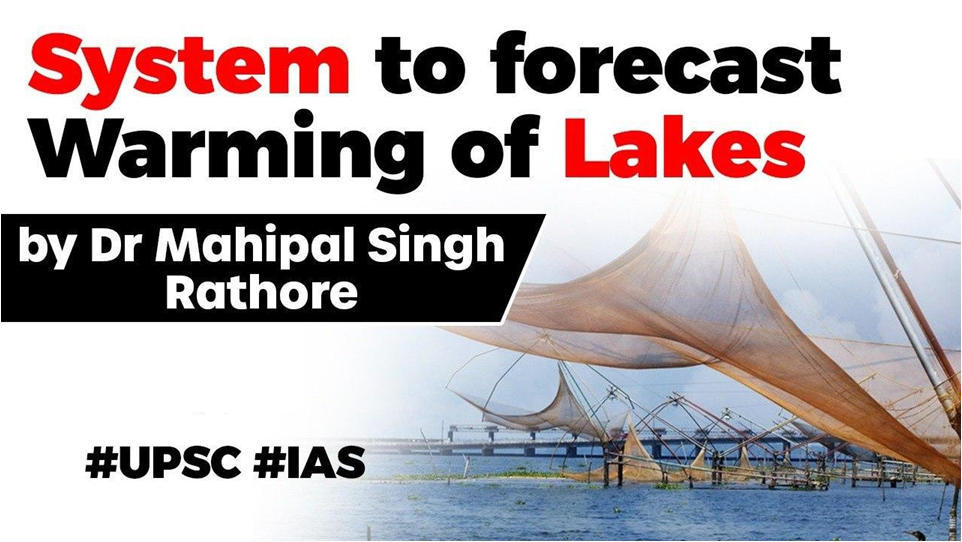Table of Contents

- Scientists from UK Centre for Ecology & Hydrology and other collaborating Universities of UK have developed a new system to better predict future warming of the world’s lakes due to climate change.
- This system could also inform about the potential threat to cold-water species of aquatic animals (fishes like salmon).
Lake is not ‘static’
- Lakes aren’t like a bathtub filled with water that just sits there. They’re almost always moving.
- Lakes “stratify” in the summer.
- That means a lake forms layers of different temperatures.
- The sun heats the water on the surface.
- But, way down deep the water is still cold.
- The oxygen in the water stays in the warmer layer.


Thermal Classification
- The researchers devised the first system that classifies lakes globally, placing each of them in one of nine ‘thermal regions’.
- Analysis using satellite images of more than 700 lakes, taken twice a month over 16 years, produced the first global lake temperature classification scheme.
- Lakes are grouped depending on their seasonal patterns of surface water temperatures.



- The coldest thermal region includes lakes in Alaska, Canada, northern Russia and China, and the warmest covers lakes in equatorial South America, Africa, India and south-east Asia.
Worrying scenario due to climate change
- The researchers predict that by the year 2100, for the most extreme climate change scenario, average lake temperature will be around 4 degrees Celsius warmer.
- 66 % of lakes globally will be classified in a warmer thermal region than they are now.
- By combining the thermal data with a lake model and climate change scenarios the researchers were able to identify that northern lakes, such as those in the UK, will be particularly sensitive to climate change
Impact on Aquatic life
- Even relatively small changes in temperature can have a significant negative impact on aquatic wildlife, affecting the speed at which organisms grow and feed, and when they reproduce.
- As species do not react in the same way, prey and predators have increasingly different breeding and feeding cycles, reducing the amount of potential food available.
- Cold-water fish species in particular can be stressed by warmer temperatures.
- The potential negative impact on salmonids such as salmon, trout and Arctic charr, for example, is concerning because they play a central ecological role within food webs and also have great economic importance

- Warming also increases the risk of harmful algal blooms, which can have a negative impact on aquatic plants and fish.

- Toxic algal species such as cyanobacteria (more commonly known as blue-green algae) can kill pets and livestock and lead to human illness, while non-toxic species can affect water taste and odour and can block filters at water treatment works.
- This project was funded by the Natural Environment Research Council and it forms part of the wider GloboLakes project
- The £2.5 million GloboLakes project – involving a consortium of scientists from six UK universities and research institutes is developing the world’s first satellite-based global lake surveillance system, to monitor how lakes and reservoirs are being affected by environmental change.
**UPSC 2020 Prelims**

Latest Burning Issues | Free PDF






















 WhatsApp
WhatsApp